For the 2025 school year, there are 2 public elementary schools serving 551 students in Quaboag Regional School District. This district's average elementary testing ranking is 4/10, which is in the bottom 50% of public elementary schools in Massachusetts.
Public Elementary Schools in Quaboag Regional School District have an average math proficiency score of 41% (versus the Massachusetts public elementary school average of 40%), and reading proficiency score of 36% (versus the 42% statewide average).
Minority enrollment is 17% of the student body (majority Hispanic), which is less than the Massachusetts public elementary school average of 49% (majority Hispanic).
Overview
This School District
This State (MA)
# Schools
5 Schools
1,360 Schools
# Students
1,118 Students
605,604 Students
# Teachers
89 Teachers
51,596 Teachers
Student : Teacher Ratio
13:1
13:1
District Rank
Quaboag Regional School District, which is ranked within the bottom 50% of all 393 school districts in Massachusetts (based off of combined math and reading proficiency testing data) for the 2021-2022 school year.
The school district's graduation rate of 80-84% has decreased from 85-89% over five school years.
Overall District Rank
#233 out of 397 school districts
(Bottom 50%)
(Bottom 50%)
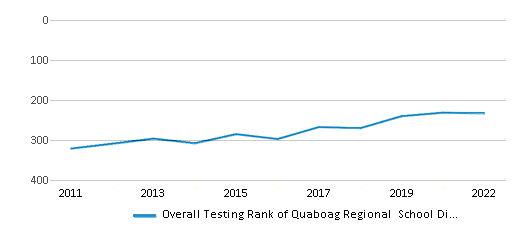
Math Test Scores (% Proficient)
39%
41%
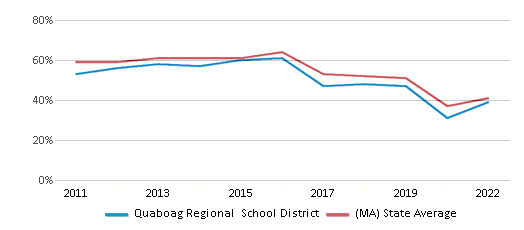
Reading/Language Arts Test Scores (% Proficient)
42%
44%

Science Test Scores (% Proficient)
43%
44%
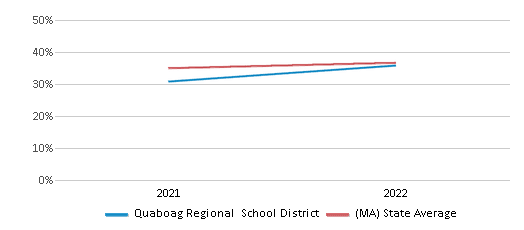
Graduation Rate
80-84%
90%
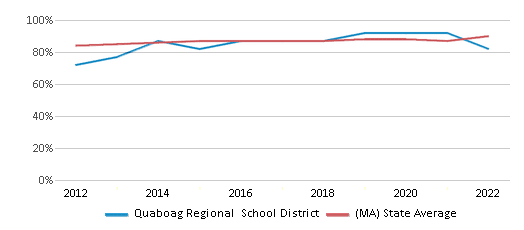
Students by Ethnicity:
Diversity Score
0.30
0.66
# American Indian Students
2 Students
1,446 Students
% American Indian Students
n/a
n/a
# Asian Students
7 Students
44,247 Students
% Asian Students
1%
8%
# Hispanic Students
108 Students
157,705 Students
% Hispanic Students
10%
26%
# Black Students
15 Students
61,567 Students
% Black Students
2%
10%
# White Students
931 Students
310,647 Students
% White Students
83%
51%
# Hawaiian Students
n/a
511 Students
% Hawaiian Students
n/a
n/a
# Two or more races Students
48 Students
29,006 Students
% of Two or more races Students
4%
5%
Students by Grade:
# Students in PK Grade:
53
20,531
# Students in K Grade:
59
58,912
# Students in 1st Grade:
66
64,458
# Students in 2nd Grade:
95
66,664
# Students in 3rd Grade:
76
64,731
# Students in 4th Grade:
89
65,978
# Students in 5th Grade:
70
67,142
# Students in 6th Grade:
96
67,086
# Students in 7th Grade:
79
56,371
# Students in 8th Grade:
91
53,443
# Students in 9th Grade:
95
5,579
# Students in 10th Grade:
87
5,198
# Students in 11th Grade:
80
4,867
# Students in 12th Grade:
82
4,504
# Ungraded Students:
-
140
District Revenue and Spending
The revenue/student of $21,318 in this school district is less than the state median of $23,845. The school district revenue/student has stayed relatively flat over four school years.
The school district's spending/student of $20,963 is less than the state median of $24,602. The school district spending/student has stayed relatively flat over four school years.
Total Revenue
$24 MM
$21,850 MM
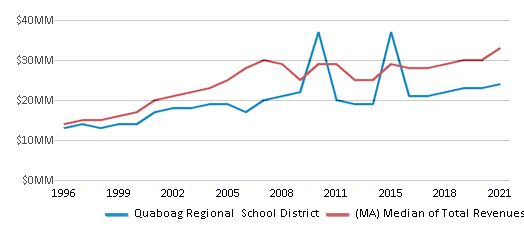
Spending
$23 MM
$22,544 MM
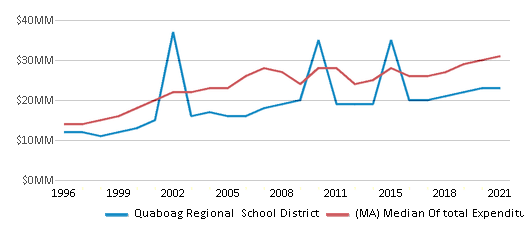
Revenue / Student
$21,318
$23,845
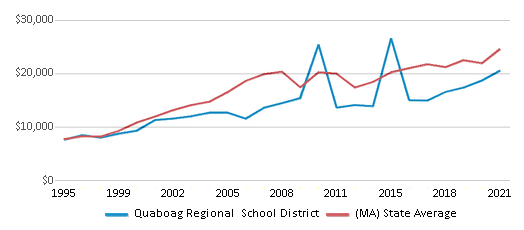
Spending / Student
$20,963
$24,602
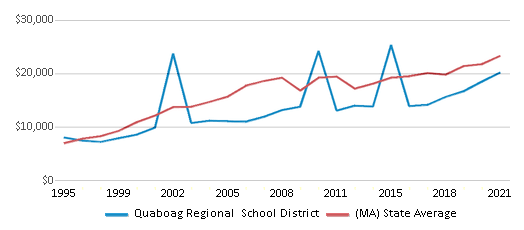
Best Quaboag Regional School District Public Elementary Schools (2025)
School
(Math and Reading Proficiency)
(Math and Reading Proficiency)
Location
Grades
Students
Rank: #11.
West Brookfield Elementary School
(Math: 45-49% | Reading: 40-44%)
Rank:
Rank:
6/
Top 50%10
89 North Main Street
West Brookfield, MA 01585
(508) 867-4655
West Brookfield, MA 01585
(508) 867-4655
Grades: K-6
| 244 students
Rank: #22.
Warren Elementary School
(Math: 35-39% | Reading: 30-34%)
Rank:
Rank:
4/
Bottom 50%10
51 Schoolhouse Drive
West Warren, MA 01092
(413) 436-5983
West Warren, MA 01092
(413) 436-5983
Grades: K-6
| 307 students
Recent Articles

Year-Round Or Traditional Schedule?
Which is more appropriate for your child? A year-round attendance schedule or traditional schedule? We look at the pros and cons.

Why You Should Encourage Your Child to Join a Sports Team
Participating in team sports has a great many benefits for children, there is no doubt. In this article you will learn what those benefits are.

White Students are Now the Minority in U.S. Public Schools
Increasing birth rates among immigrant families from Asia and Central and South America, combined with lower birth rates among white families, means that for the first time in history, public school students in the United States are majority-minority. This shift in demographics poses difficulties for schools as they work to accommodate children of varying language abilities and socio-economic backgrounds.





